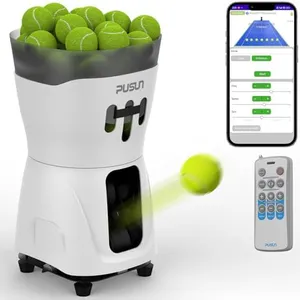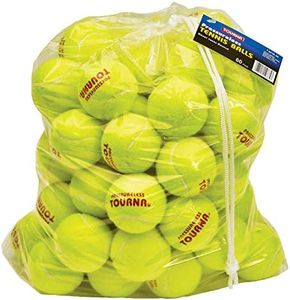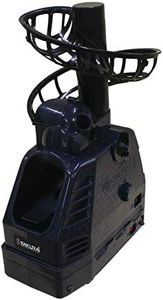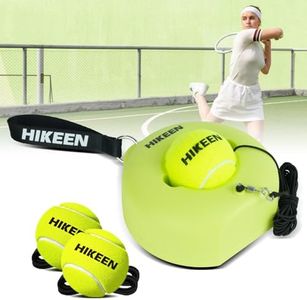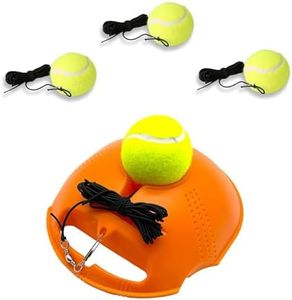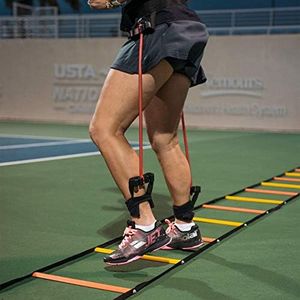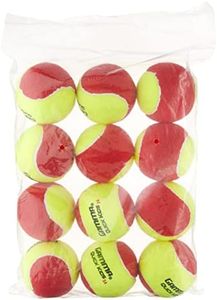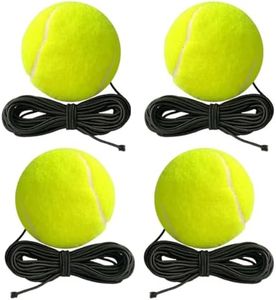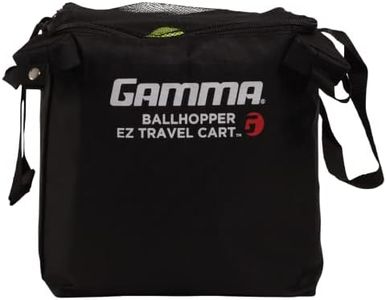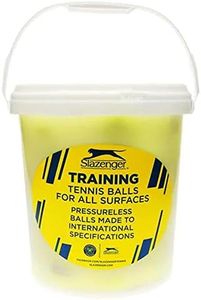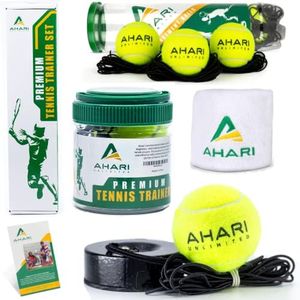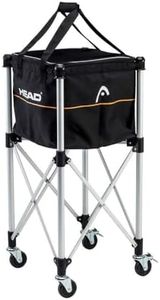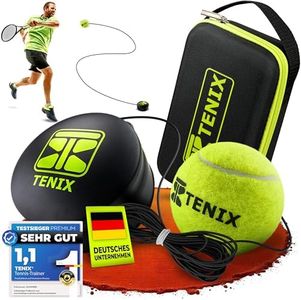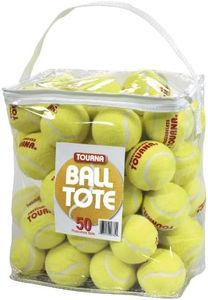We Use CookiesWe use cookies to enhance the security, performance,
functionality and for analytical and promotional activities. By continuing to browse this site you
are agreeing to our privacy policy
10 Best Tennis Training Equipment
From leading brands and best sellers available on the web.Buying Guide for the Best Tennis Training Equipment
Choosing the right tennis training equipment can greatly enhance your skills, boost your confidence, and make your practice sessions more productive. The best approach is first to be clear about what you want to improve—be it your swing, footwork, accuracy, strength, or overall fitness. Each type of equipment serves a different purpose, and by understanding the specifics, you can find training tools that match your skill level and training style. Always consider your current ability and training environment, as this will help you select gear that keeps you motivated and progressing without causing frustration or injury.Rebounder/Practice NetsA rebounder or practice net is designed to mimic the feel of hitting with a real partner by bouncing the ball back to you. The important aspect here is the size and tension of the net: smaller, tighter nets return the ball faster and are suited to more advanced players looking to sharpen reaction times, while larger or looser nets are more forgiving and ideal for beginners or intermediates. Choose a net that allows you to successfully practice your current drills but also challenges you enough to improve your skills.
Ball MachinesBall machines spit tennis balls at you in various speeds and patterns, allowing you to practice repetitive shots or simulate a game scenario. The key features to consider are ball capacity (how many balls it holds), speed settings, and the ability to vary spin or shot direction. Lower-capacity or simple machines are good for basic practice and beginners, while high-capacity, programmable options are best for serious players working on specific shot types or stamina training. Match the complexity of the machine to your training goals and how much control you want over your sessions.
Training Cones and MarkersCones and markers are used on the court to set up movement drills, target zones, or agility exercises. Their main value is in helping players work on footwork and positioning. Some cones are higher and more visible, while low-profile markers stay out of the way and reduce trip risk. If you prioritize fast movement and agility, choose flatter markers; for visual clarity in setting up drills, traditional cones may be preferable. Think about the type of drills you do most often to select the right ones for your routines.
Resistance Bands and Strength ToolsResistance bands and strength tools are essential for building the muscles used in tennis—especially in your shoulders, arms, and legs. Bands come in various resistance levels, from light to heavy. Beginners or those focusing on flexibility should start with lighter bands, while players with a focus on power or injury prevention can use heavier resistance. Always choose a band that lets you complete your workout with correct form but still provides enough challenge to build strength.
Hand-Eye Coordination AidsTools that develop hand-eye coordination typically involve smaller balls, specialized paddles, or reaction tools designed to sharpen reflexes. The difficulty varies: softer, slower balls are easier to track for beginners, while irregularly shaped balls or faster tools challenge advanced players. If you're just starting, pick aids that help you form basic skills. As you improve, graduate to more unpredictable or demanding tools to push your reflexes and coordination further.
Court Targets and Accuracy TrainersAccuracy trainers or targets are placed on the court to help players work on shot precision. These can be flat mats, pop-up targets, or inflatable obstacles. Beginners benefit from larger, more forgiving targets, while advanced players should use smaller or adjustable targets for focused improvement. Select targets based on the shots or serves you wish to refine and your current accuracy level to keep practice challenging but achievable.
